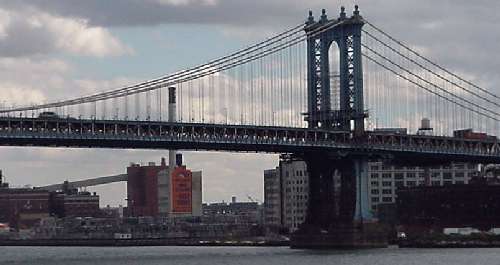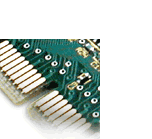
PROJECT 1: BRIDGE BUILDING
Background Information:
Bridges come in many different shapes and sizes. The engineers that design them need to carefully consider the forces that will be at work on the bridge, the material it is to be made out of, and the shape of the structure.
The main forces to consider are tension and compression, but remember that there are many others. Tension is a force which tries to expand or lengthen the thing that it is acting on. Compression is a force which tries to compress or shorten the thing it is acting on. Think of a spring. If you are pulling the ends of the spring apart, we say it is in tension. If you are pushing the ends together, we say it is in compression. Below is an illustration of how these forces apply to a bridge deck.
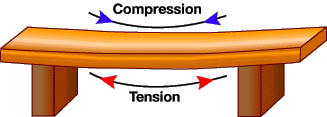
When a load, like cars or people, is applied to the bridge, it forces the deck downward, causing the top to compress and the bottom to pull apart. The best way to deal with these forces is to either dissipate them or transfer them. To dissipate them means to spread them out over a larger area. To transfer them means to move to the force from a weak area to a stronger area.
There are three major types of bridges: the beam bridge, the arch bridge, and the suspension bridge. Each type deals with loads and forces in a different way. The deciding factor for designers in choosing a bridge type is span. Span is the distance between to bridge supports. Factors such as geography, budget, labor, and materials determine the required span and the necessary number of supports. A modern beam bridge can span up to 200 feet, whereas an arch bridge can span up to 1000 feet, and a suspension bridge can reach 7,000 feet. More than a mile!
A beam bridge, like the one above, is basically a rigid horizontal structure resting on two piers. If you have ever pushed a log over a ditch to cross it, then you have already built a beam bridge. Beam bridge roadways are often supported by trusses to give it added strength and rigidity.
An arch bridge, like the one below, is a semicircular structure which dissipates weight from the center of the deck to the abutments on the ends. An arch bridge is constantly in compression.
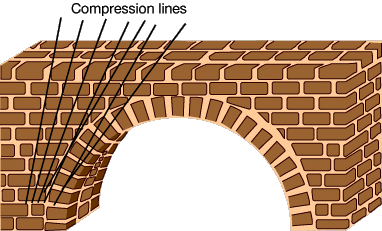
Tension in a arch bridge is negligible. The natural curve of the arch greatly reduces the effects of tension on the underside of the arch. The larger the degree of curvature, meaning the larger the semicircle, the more the arch is effected by tensile forces.
The suspension bridge works quite a bit differently. The deck of a suspension bridge is hung from cables that are strung through two tall towers and anchored by an anchorage at the end of each cable. The roadway is under compression, but since it is suspended, the force is transferred to the cables then through the towers. The force is then dissipated into the ground where the towers are anchored. The cables experience tensile forces as well, which actually cause them to stretch. Ultimately, the tension is dissipated through the anchorages and into the ground.
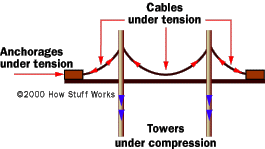
Suspension bridges also have a truss structure underneath the roadway for added support.
In addition to tension and compression, engineers have to consider torsion (the tendency to twist), resonance (the tendency for vibrations to make the roadway move in waves), and the forces of nature (rain, snow, wind, natural disasters). Believe it or not, weather has caused the more bridge failures than any other force, because of its unexpectancy. Engineers test bridge designs by building extremely accurate small-scale models. As technology improves, designers will be able to test models more efficiently as well as improve the strength of bridge building materials.
